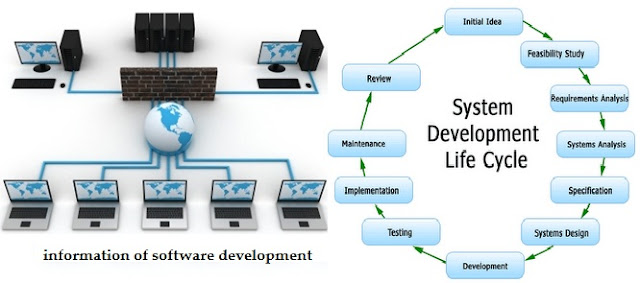This information will introduce Capability Maturity Model Integration (CMMI) framework to the software developer. Structure of CMMI will be discussed and detailed debate of different process areas of software which will be carried out.
Some of the key software manufacturing tricks like, software requirement management, software configuration management, software quality assurance, and software estimation will be discuss in feature. Some of the tools and their significance uses throughout the development process is scattered here for the new commerce.
A course in software engineering
Software Engineering Courses are useful for the integration of module and tools so therefore, below is given what we should do and what is the element is needed for Development Process.
1. Introduce the new commerce to processes in general and development processes in particular part of developing systems.
2. Develop an appreciation for focusing on the processes during development.
3. Introduce the new commerce to current development practices in the industry and quality assurance techniques.
5. Introduce the new commerce with process frame work - Capability Maturity Model Integration (CMMI).
6. Enable to assess software processes maturity of an organization with respect to CMMI. Also should be able to suggest improvement in organizational processes to achieve higher process maturity with respect to CMMI.
Software Steps and Systems:

Following are the steps involved in systematic software. Examples of tools that may be used during the various stages are also provided. Note that though these steps generally apply to software in C, C++ or Java, they may be extended to Web – based software (e.g. development in PHP) as well.
For these activities we would be need of as documentation, Version Control (e.g. CVS, SCCS), Software metrics – performance related tools, Complexity, resource requirements, algorithms, Debugging and memory management, Coding style guidelines, Testing, tuning, code walkthroughs, Data Dictionary, static analysis, Block diagrams / Flow diagrams) Scheduling, milestones, API design, calling interface, Maintenance, bug tracking (E.g. Bugzilla), Requirements analysis and design (with feedback).
Technologies Used for all the three requirements the team used Java as its front end while for the back end multi database support was one of the requirements of message boards and Wiki. Thus the shortlisted message board and wiki were available with MySQL, Oracle, PostgreSQL and SQL Server database. However since MySQL was currently being used in Tietronix it was decided to have MySQL as the database for message boards and Wiki.
After knowing this information of software development we have come across some new concepts about software application development and maintenance that how we use the tools and software development process. We did learn also how many systems and tools would be adopted to develop a software application and then deploying it on the portal.
Some of the key software manufacturing tricks like, software requirement management, software configuration management, software quality assurance, and software estimation will be discuss in feature. Some of the tools and their significance uses throughout the development process is scattered here for the new commerce.
A course in software engineering
Software Engineering Courses are useful for the integration of module and tools so therefore, below is given what we should do and what is the element is needed for Development Process.
1. Introduce the new commerce to processes in general and development processes in particular part of developing systems.
2. Develop an appreciation for focusing on the processes during development.
3. Introduce the new commerce to current development practices in the industry and quality assurance techniques.
5. Introduce the new commerce with process frame work - Capability Maturity Model Integration (CMMI).
6. Enable to assess software processes maturity of an organization with respect to CMMI. Also should be able to suggest improvement in organizational processes to achieve higher process maturity with respect to CMMI.
Software Steps and Systems:

Following are the steps involved in systematic software. Examples of tools that may be used during the various stages are also provided. Note that though these steps generally apply to software in C, C++ or Java, they may be extended to Web – based software (e.g. development in PHP) as well.
For these activities we would be need of as documentation, Version Control (e.g. CVS, SCCS), Software metrics – performance related tools, Complexity, resource requirements, algorithms, Debugging and memory management, Coding style guidelines, Testing, tuning, code walkthroughs, Data Dictionary, static analysis, Block diagrams / Flow diagrams) Scheduling, milestones, API design, calling interface, Maintenance, bug tracking (E.g. Bugzilla), Requirements analysis and design (with feedback).
Technologies Used for all the three requirements the team used Java as its front end while for the back end multi database support was one of the requirements of message boards and Wiki. Thus the shortlisted message board and wiki were available with MySQL, Oracle, PostgreSQL and SQL Server database. However since MySQL was currently being used in Tietronix it was decided to have MySQL as the database for message boards and Wiki.
After knowing this information of software development we have come across some new concepts about software application development and maintenance that how we use the tools and software development process. We did learn also how many systems and tools would be adopted to develop a software application and then deploying it on the portal.
Really its very useful information that you have shared and looks great post. Web Design Services in Bangalore | Website Designing in Bangalore | Web Design & Development Company in Bangalore
ReplyDelete